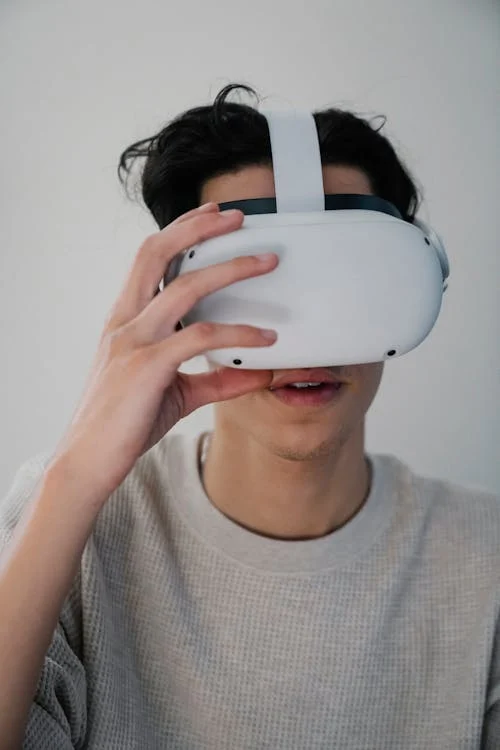Table of Contents

From a specialized market to a widespread phenomenon, wearable technology is transforming how we use technology and keep an eye on our health. Smartwatches, augmented reality (AR) glasses, fitness trackers, and other wearable technology are all becoming more and more integrated into our daily lives. This article examines the most recent developments in wearable technology, emphasizing the ways in which these gadgets are changing many facets of our lives.
Trends in Wearable Technology
- Health and Fitness Monitoring: The health and fitness industry has been one of the primary drivers of wearable technology. Fitness trackers and smartwatches are equipped with advanced sensors that monitor physical activity, heart rate, sleep patterns, and more. These devices provide users with real-time data on their health and fitness levels, encouraging healthier lifestyles and enabling more personalized wellness plans. Recent innovations include more sophisticated sensors capable of tracking additional health metrics such as blood oxygen levels, electrocardiograms (ECGs), and stress levels. Wearables like the Apple Watch Series 8 and Fitbit Charge 5 offer features that can detect irregular heart rhythms and provide alerts for potential health issues. This continuous health monitoring is particularly valuable for individuals with chronic conditions or those seeking to improve their overall wellness.
- Integration with Artificial Intelligence (AI): Wearable technology is becoming more capable thanks in large part to artificial intelligence. Wearables can evaluate enormous volumes of data to produce more precise insights and forecasts by utilizing machine learning algorithms. Wearables with AI capabilities, for example, can provide tailored fitness advice based on each user’s activity preferences and objectives. AI is also being utilized to increase the precision of health monitoring. Machine learning models are able to identify minute variations in vital signs and anticipate possible health problems before they worsen. Users can take preventative action and, if required, seek medical attention thanks to this predictive capability.
- Advancements in Augmented Reality (AR): Wearable augmented reality (AR) devices, like smart glasses, are becoming more popular as they combine digital and physical data. By superimposing digital content on the user’s field of vision, augmented reality glasses, such as Google Glass and the Microsoft HoloLens, provide immersive experiences. Numerous uses for these gadgets exist, such as interactive training, remote assistance, and navigation. These wearables are becoming more useful and intuitive thanks to advancements in augmented reality technology. The comfort and visual clarity of AR glasses are being improved by developments in display technology, such as better microdisplays and transparent lenses. Additionally, users can now interact with AR content more easily thanks to advancements in voice recognition and gesture control.
- Fashion and Style Integration: Fashion is increasingly incorporating wearable technology to combine practicality and style. Fitness trackers and smartwatches are increasingly being made with fashionable, interchangeable faces and bands to accommodate a variety of personal preferences. Additionally, smart textiles and textiles with sensors and electronics are integrating wearable technology into apparel and accessories. Smart clothing that can track body metrics like posture and temperature, as well as smart accessories like rings with health tracking capabilities, are examples of innovations in this field. Thanks to these developments, wearable technology is becoming more aesthetically pleasing and functional for a wider range of users.
- Enhanced Connectivity and Interoperability: The integration of wearable technology with other systems and devices is growing. A smooth user experience is made possible by the seamless integration of wearables with smartphones, smart home appliances, and health management platforms. For instance, smartwatches can communicate with other linked devices, receive notifications, and operate smart home systems. Furthermore, wearables’ performance and connectivity are being enhanced by developments in wireless technology, such as 5G and Bluetooth Low Energy (BLE). Faster data transfer, longer battery life, and improved wearable-to-device communication are all made possible by these technologies.
Innovations in Wearable Technology

- Biometric Authentication: Wearable technology is starting to include biometric authentication as a standard feature, which adds an extra degree of protection. To protect personal information and guarantee that only authorized users can access their devices, a lot of smartwatches and fitness trackers now come equipped with fingerprint sensors, facial recognition, or heart rate-based authentication. This invention streamlines user authentication while simultaneously improving security. For example, biometric authentication eliminates the need for passwords or PINs and enables users to swiftly and securely unlock their devices or make payments.
- Flexible and Stretchable Electronics: Stretchable and flexible electronics are creating new wearable technology opportunities. In order to increase the comfort and adaptability of wearables, researchers are creating materials and parts that can stretch, bend, and conform to the body. For instance, to monitor health metrics without the need for large devices, flexible sensors can be incorporated into adhesive patches or clothing. Thanks to these developments, wearable technology is becoming more versatile and less intrusive for a wider range of applications. Applications for flexible wearables include sports performance analysis, ongoing health monitoring, and even integration into smart textiles.
- Improved Battery Life and Charging Solutions: One major issue with wearable technology is still battery life. By increasing the wearables’ operational time and decreasing the frequency of charging, advancements in battery technology and charging solutions are tackling this issue. The use of energy-efficient parts, sophisticated battery materials, and creative charging techniques are examples of recent advancements. For example, some wearables now have wireless or solar-powered charging capabilities, which improves user convenience and lessens the need for frequent recharging.
- Integration with Health Ecosystems: Electronic health records (EHRs), telemedicine platforms, and personalized health management systems are just a few of the comprehensive health ecosystems that are increasingly incorporating wearables. More coordinated and efficient care is made possible by this integration, which makes data sharing between wearables, medical professionals, and patients easy. For instance, wearables that monitor long-term health issues like diabetes or high blood pressure can send real-time data to medical professionals, enabling remote monitoring and prompt treatment. This ecosystem approach lessens the need for in-person visits, promotes proactive management, and improves patient care.
Conclusion

Electronic health records (EHRs), telemedicine platforms, and personalized health management systems are just a few of the comprehensive health ecosystems that are increasingly incorporating wearables. More coordinated and efficient care is made possible by this integration, which makes data sharing between wearables, medical professionals, and patients easy. For instance, wearables that monitor long-term health issues like diabetes or high blood pressure can send real-time data to medical professionals, enabling remote monitoring and prompt treatment. This ecosystem approach lessens the need for in-person visits, promotes proactive management, and improves patient care.


